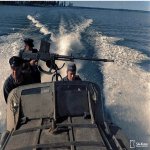Canary Girls: WW 1 Women Who Turned Yellow
Picric acid, an explosive used in shell filling compounds, but also as a dye. Usually stored under water for safety. Also reactive with metal to form unstable compounds. Hardly pick and shovel material.
Usually stored under water for safety. Also reactive with metal to form unstable compounds. Hardly pick and shovel material. 
Grizz
Picric acid, an explosive used in shell filling compounds, but also as a dye.
Grizz
Last edited:









































































